The Well-Tempered Ear
Classical music: Two FREE chamber music concerts on Thursday and Friday nights at the UW-Madison feature quartets and quintets by Mozart, Boccherini, Schubert, Dvorak and Weinberg
2 Comments
IF YOU LIKE A CERTAIN BLOG POST, PLEASE SPREAD THE WORD. FORWARD A LINK TO IT OR, SHARE or TAG IT (not just “Like” it) ON FACEBOOK. Performers can use the extra exposure to draw potential audience members to an event.
By Jacob Stockinger
Chamber music fans have something special to look forward to this week with back-to-back evening concerts at the University of Wisconsin-Madison’s Madison’s Mead Witter School of Music that mix famous and well-known works with less familiar ones.
THURSDAY NIGHT
On Thursday night at 7:30 p.m. in Mills Hall, the Pro Arte Quartet will perform.
The program features six miniature “Evening Songs” (1865) – also called “Cypresses” — by Antonin Dvorak; the String Quartet No. 5 in B-Flat Major (1945) by Mieczyslaw Weinberg; and the String Quartet in B-Flat Major “Hunt,” K. 458 (1784), by Wolfgang Amadeus Mozart. (You can hear one of Dvorak’s “Cypresses” in the YouTube video at the bottom.)
Members of the Pro Arte Quartet (below, from left, in a photo by Rick Langer) are: violinists David Perry and Suzanne Beia; violist Sally Chisholm; and cellist Parry Karp.
For more information about the unique and dramatic history of the critically acclaimed Pro Arte Quartet, the longest active string quartet in the history of music, go to:
https://www.music.wisc.edu/event/pro-arte-quartet/
FRIDAY NIGHT
On Friday night at 7:30 p.m. in Mills Hall, UW-Madison cellist Uri Vardi (below) will be joined by several faculty colleagues, one of his students and his son for an evening of three quintets.
In addition to Uri Vardi, the performers include: clarinetist Amitai Vardi (below); pianist Christopher Taylor; violinists David Perry and Soh-Hyun Park Altino; violist Sally Chisholm; cellist James Waldo; and double bassist David Scholl.
The program includes: the Quintet in C major, assembled from other quintets by Johann Lauterbach, by Luigi Boccherini, a contemporary of Mozart; the famous Clarinet Quintet in A Major, K. 581, by Wolfgang Amadeus Mozart and the well-known “Trout” Quintet by Franz Schubert.
For more background, go to: https://www.music.wisc.edu/event/uri-vardi-quintets-students-friends-and-family/
Tags: #AmitaiVardi, #AntoninDvorak, #BlogPost, #BlogPosting, #ChamberMusic, #ChristopherTaylor, #ClarinetQuintet, #Classicalera, #CriticallyAcclaimed, #DavidPerry, #DoubleBass, #DoubleBassist, #FacebookPost, #FacebookPosting, #FacultyMember, #FranzSchubert, #HistoryofMusic, #HuntQuartet, #James Waldo, #JamesWaldo, #JohannLauterbach, #LuigiBoccherini, #MadisonSymphonyOrchestra, #MeadWitterSchoolofMusic, #MieczyslawWeinberg, #Musicfaculty, #ParryKarp, #ProArteQuartet, #SallyChisholm, #Soh-HyunParkAltino, #StringQuartet, #SuzanneBeia, #TroutQuintet, #UniversityofWisconsin-Madison, #UriVardi, #WisconsinChamberOrchestra, #WolfgangAmadeusMozart, #YouTubevideo, Amitai Vardi, Antonín Dvořák, Arts, assemble, audience, background, blog, cellist, Cello, Chamber music, Christopher Taylor, clarinet, clarinetist, Classical music, colleague, composer, Concert, contemporary, critically acclaimed, cypresses, David Perry, double bass, double bassist, evening, Facebook, faculty, father, Franz Schubert, History, hunt, Jacob Stockinger, Johann Lauterbach, like, link, Luigi Boccherini, Madison, Madison Symphony Orchestra, Mead Witter School of Music, Mieczyslaw Weinberg, Mozart, Music, Parry Karp, performer, Piano, Pro Arte Quartet, quintet, Sally Chisholm, School of Music, share, Soh-Hyun Park Altino, son, song, String quartet, Student, Suzanne Beia, tag, Trout, Trout Quintet, United States, University of Wisconsin-Madison School of Music, University of Wisconsin–Madison, Uri Vardi, UW-Madison, Viola, Violin, violinist, violist, Wisconsin, Wisconsin Chamber Orchestra, Wolfgang Amadeus Mozart, word, YouTube
Classical music: Choral music, wind music and brass music add to the season-ending events this super-busy weekend.
1 Comment
By Jacob Stockinger
This weekend brings more season-closers. The groups concluding their concert seasons include the First Unitarian Society of Madison’s FREE Friday Noon Musicales; the Festival Choir of Madison; the UW Chamber Orchestra; and Edgewood College.
Here is a round-up of yet another busy weekend.
FRIDAY
On Friday afternoon, from 12:15 to 1 p.m., the last FREE Friday Noon Musicale of the season at the first Unitarian Society of Madison, 900 University Bay Drive, will feature Driftless Winds, a University of Wisconsin-Platteville Faculty Reed Trio.
Members are Laura Medisky, oboe; Corey Mackey, clarinet; and Jacqueline Wilson, bassoon.
The program, performed in the historic Landmark Auditorium designed by Frank Lloyd Wright, includes music by Wolfgang Amadeus, Jacques Ibert, Erwin Schulhoff and Ludwig van Beethoven.
Bring your lunch; coffee and tea are provided.
On Friday night, the Madison Chamber Choir will perform at 7:30 p.m. at Christ Presbyterian Church (http://www.madisonchamberchoir.com) . It will be directed by Adam Kluck.
On Friday night, May 2, at 7:30 p.m. in the First Congregational United Church of Christ, 1609 University Avenue, the University of Wisconsin-Stout Choirs come to Madison on a mini-tour, with a program titled “An Ode To The Bard: Shakespeare in Music.”
The concert will feature musical settings of Shakespeare’s words, popular music of his time (including tunes that are referenced in his plays), and works inspired by the legacy of William Shakespeare (below).
Performers include the Stout Symphonic Singers (an open-seat choir of about 30 singers) and the Stout Chamber Choir (an auditioned choir of 20 singers), both directed by composer-conductor Jerry Hui (below), with pianist Michaela Gifford.
Admission is free with a free-will donation welcomed.
SATURDAY
On Saturday at 11 a.m. at Oakwood Village West, 6209 Mineral Road, on Madison’s far west side, the UW-Stout Choirs will give a second performance of their Friday night program. See directly above.
On Saturday afternoon at 4 p.m. in Mills Hall, the All-University String Orchestra will perform a FREE concert under conductor Janet Jensen (below, in a photo by Katrin Talbot). Sorry, no word on a specific program.
On Saturday, May 3, at 7 p.m. in the St. Joseph Chapel at 1000 Edgewood College Drive, the Edgewood Concert Band and Jazz Ensemble will perform under the direction of Walter Rich and Daniel Wallach. Included will be works by Paul Dukas, Jenkins, Williams, Van der Roost and Franz von Suppe.
Admission is $7 to benefit music scholarships at the college.
On Saturday night at 7:30 p.m., the FESTIVAL CHOIR OF MADISON (below) will conclude its 40th season in the First Baptist Church, 518 North Franklin Avenue, in Madison. It will perform with the Pecatonica String Quartet and winds, and under the baton of artistic director Bryson Mortensen, who is the Director of Choral Activities at the University of Wisconsin-Rock County.
The program is entitled “Gloria” and features two Glorias: the well-known one by Antonio Vivaldi and a rarely heard one by Luigi Boccherini. A pre-concert lecture, begins at 6:30 p.m. The Ear hears there will also be an encore performance of Wolfgang Amadeus Mozart‘s “Ave Verum Corpus.”
Tickets are $18 general public, $14 for seniors and $8 for students if bought in advance – call (608) 274-7089; the day of the concert, tickets are $20, $15 and $10, respectively.
For more information, visit the link: http://festivalchoirmadison.org/index.htm
On Saturday night at 8 p.m. in Mills Hall, the UW Women’s Chorus and the University Chorus will perform a FREE concert under the direction of Anna Volodarskaya and Adam Kluck (below), respectively. Sorry, no word yet on a specific program.
SUNDAY
On “Sunday Afternoon Live From the Chazen” Museum of Art on the campus of the University of Wisconsin-Madison, from 12:30 to 2 p.m., members of the music faculty at the University of Wisconsin-Eau Claire will perform the second-to–last concert of that series this season. As always it will be broadcast live on Wisconsin Public Radio. The concert itself is FREE in the Brittingham Gallery No. 3. Sorry, no word on a program.
On Sunday afternoon at 2 p.m., in Mills Hall, the UW Concert Band will perform a FREE concert under director Mike Leckrone (below). Sorry, no word on the program.
On Sunday, May 4, at 2:30 p.m. in the St. Joseph Chapel, 1000 Edgewood College Drive, the Chamber Singers, Men’s Choir, Women’s Choir and Campus-Community Choir.
Kathleen Otterson (below) will conduct the Women’s Choir, while Albert Pinsonneault will lead the Chamber Singers, Campus-Community Choir, and Men’s Choir.
Pinsonneault (below) will also conduct the combined choirs and the Edgewood Chamber Orchestra in a performance of Franz Joseph Haydn’s “Te Deum.”
Admission is $7 to benefit music scholarships at Edgewood.
On Sunday evening at 6:30 p.m. in Music Hall, at the foot of Bascom Hill, the Lincoln Chamber Brass of Chicago will perform a FREE concert, just a week before they compete at the prestigious Fischoff Chamber Music Competition.
All of them are members of Civic Orchestra of Chicago; at 21, the horn player already substitutes for the Chicago Symphony Orchestra. Four are students at Northwestern University, the fifth at DePaul. Four of the five, including Ansel Norris, who was born in Madison and in high school studied with UW-Madison trumpeter John Aley, will attend the Boston Symphony Orchestra’s Tanglewood Festival this summer.
Musicians of the Civic Orchestra of Chicago. The program includes Victor Ewald’s Brass Quintet No. 3; David Sampson’s “Morning Music”; Franz Biebl’s “Ave Maria” (arranged by Barker); and Giles Farnaby’s Suite of Dances.
Members (below, from left) are Ansel Norris and William Cooper, trumpets; Kevin Haseltine, horn; Joseph Peterson, trombone; and Scott Hartman, bass trombone.
For more information, visit: http://lincolnchamberbrass.wordpress.com/home/
At 7:30 in Mills Hall, the UW Chamber Orchestra (below) will perform its last concert of the season and its last concert before being either mothballed or terminated.
The performance is FREE and will be under the baton of director James Smith.
The program includes: Jacques Ibert’s “Hommage to Mozart”; Richard Strauss’ “Dance Suite After Francois Couperin”; and Mozart’s Symphony No. 39 in E Fat Major. (In a YouTube video at the bottom, you can hear the first movement performed by the legendary conductor Karl Bohm and the Vienna Philharmonic.)
For more about the news significance of the event, here is a link to yesterday’s blog post:
Tags: Antonio Vivladi, Arts, Ave Verum Corpus, band, Beethoven, Boccherini, Boston Symphony Orchestra, brass, Chamber choir, Chamber music, Chicago, Chicago Civic Orchestra, Chicago Symphony Orchestra, Choir, choral music, Classical music, Concert Band, DePaul University, Dukas, Early music, Edgewood College, encore, Erwin Schulhoff, First Unitarian Society of Madison, Fischoff Chamber Music Competition, Frank Lloyd Wright, Franz Joseph Haydn, Friday, Gloria, Horn, Jacob Stockinger, Jacques Ibert, Karl Böhm, Lincoln Chamber Brass, Ludwig van Beethoven, Luigi Boccherini, Madison, Mozart, Music, Northwestern University, Paul Dukas, Piano, reed, Richard Strauss, Saturday, Schulhoff, Shakespare, Symphony No. 39 in E Flat Major, Tanglewood, Te Deum, trio, Trumpet, University of Wisconsin-Madison School of Music, University of Wisconsin–Madison, UW-Eau Claire, UW-Platteville, UW-Rock County, UW-Stout, Vienna Philharmonic, von Suppe, William Shakespeare, wisconsin public radio, Wolfgang Amadeus Mozart, YouTube
Classical music: Famed Japanese violist Nobuko Imai joins the UW-Madison’s Pro Arte String Quartet this Wednesday night in a MUST-HEAR and FREE concert of Mozart, Brahms and Britten. Plus, the Wisconsin Chamber Orchestra ends its winter “Masterworks” season Friday night with Haydn, Mozart, Beethoven and Canteloube. And pianist Jeremy Denk gives a public master class on Wednesday night at 8 p.m. (NOT 7) in Morphy Hall.
3 Comments
AN ALERT and A REMINDER: Pianist Jeremy Denk’s masterclass is Wednesday night at 8 p.m. (NOT 7 p.m., as erroneously stated yesterday in a reader comment, in Morphy Hall. Also, the Wisconsin Chamber Orchestra closes out its current Masterworks season this Friday night at 8 p.m. in the Capitol Theater of the Overture Center. The conductor is WCO music director Andrew Sewell, and the emphasis in on the Classical era composers — Haydn (Symphony No. 83, “The Hen”), Mozart (love songs from the opera “Don Giovanni” with Metropolitan Opera soprano Susanna Phillips, below) and Beethoven (Symphony No. 2) — that Sewell performs so brilliantly and so convincingly. Joseph Canteloube’s popular and more Romantic “Songs of the Auvergne” are also featured. For more information and tickets, here is a link: http://wcoconcerts.org/performances/masterworks/51/event-info/
By Jacob Stockinger
The music schedule for April is crazy busy, and it just keeps getting crazier and busier.
Take the University of Wisconsin’s Pro Arte String Quartet (below in a photo by Rick Langer), which has a fine reputation when it plays by itself.
But it also brings in some respected guests fairly often, especially guests cellist, violists and pianists. That is what makes the PAQ’s FREE concert this Wednesday night at 7:30 p.m. in Mills Hall so special.
The guest this time will be the acclaimed Japanese violist Nobuko Imai (below), who once played with the esteemed Vermeer String Quartet and who rarely plays in America.
The program includes: the masterful Viola Quintet in C major, K. 515, by Mozart (substituted for the Quintet, Op. 11, No. 5 by Luigi Boccherini); Benjamin Britten’s Solo Cello Suite No. 2 transcribed for solo viola; and the great String Quintet No. 2 in G major, Op. 111, by Johannes Brahms.
Violist Elias Goldstein (below) – who did his doctorate here at UW-Madison and now teaches at Louisiana State University in Baton Rouge –will also perform with members of the Pro Arte Quartet.
Here is some background about Noboku Imai, provided by the UW-Madison School of Music: s
“With her exceptional talent, musical integrity and charisma, Nobuko Imai is considered to be one of the most outstanding violists of our time. She has excelled as a soloist, recitalist, chamber musician, and pedagogue, and performs often with world-renowned artists.
“In 2003, Nobuko Imai, Mihaela Martin, Stephan Picard and Frans Helmerson formed the Michelangelo Quartet (below), which gained an international reputation has become one of the finest quartets in the world.
“Imai currently teaches at the Geneva and Amsterdam Conservatories, Kronberg International Academy and Ueno Gakuen University in Tokyo.”
Here are words of tribute from the regular Pro Arte Quartet violist Sally Chisholm (below) about Imai and about the role of the viola, which often goes understated in the shadow on violins and cellos:
“Nobuko Imai is coming to Madison from Curtis where she is giving a master class just before arriving here, and will also appear in the Chamber Music Society of Minnesota on April 14. We are very lucky to bring her to Madison, both because she is so renowned a musician and violist, but also because she makes very few appearances in the US. Nobuko teaches in Geneva, Switzerland, and in Germany and Japan. Busy lady. She will be in residence at the Marlboro Festival this summer.
“We are honored and thrilled to have Nobuko Imai, one of the world’s most famed violists, include Madison for a rare U.S. appearance. She is a star in the solo world of string playing, and a person of humility and vision. Though she is one of the most influential performers and teachers in Europe and Asia, she seldom performs in the United States.
“On this coming trip she will be performing only at the Curtis Institute of Music in Philadelphia, St. Paul, Minn., and in Madison. Her master classes are renowned for her ability to show a student how to transform from good to superb, all in a public setting.”
As for the role of the viola (below), Chisholm adds: “Brahms loved the sound of contralto, which is one reason he is so generous to the viola in his chamber music. With so many roles to fulfill, as an inner voice, a leader of harmonic motion, a primary texture, and a solo voice, the sound of the viola is often turned to as the soul of the quartet.
“Whether contralto or mezzo-soprano, the voice of the viola is used when a composer has something very important to say. For performers, the luxury of living inside the quartet sound, yet having many occasions to soar above, is so rewarding that it lasts a lifetime.”
Tags: Benjamin Britten, Cantaloube, Curtis Institute of Music, Franz Josef Haydn, Geneva, Jacob Stockinger, Jeremy Denk, Johannes Brahms, Louisiana State University, Ludwig van Beethoven, Luigi Boccherini, Madison, Nobuko Imai, Overture Center, Pro Arte Quartet, Songs of the Auvergne, Susanna Phillips, Ueno Gakuen University, United States, University of Wisconsin–Madison, Wisconsin Chamber Orchestra, Wolfgang Amadeus Mozart
Classical music review: The Wisconsin Chamber Orchestra and cellist Amit Peled triumph with Mark Kopytman’s rarely heard “Kaddish” and Haydn’s “Military” Symphony.
3 Comments
By Jacob Stockinger
When my mom made sandwiches for us, she would always say, “You take the bigger half.”
The same Law of Unequal Halves was at work at Friday night’s concert in the Overture Center‘s Capitol Theater by the Wisconsin Chamber Orchestra (below) with the Israeli-born cellist Amit Peled.
Overall, it was a terrific concert, one more event to cement the WCO’s reputation as a music-maker not to be missed. But yes, I’ll take the bigger half. And for me that was the second half.
It opened with an absolutely riveting performance concerto-like “Kaddish” of the late Russian-Israeli composer Mark Kopytman (below):
In this little known and rarely performed 20th century work, Peled (below) excelled. His solo cello played the part of the eldest son reciting the Jewish prayer for the dead while the orchestra played the part of the father.
The two dialogued back and forth, complete with agreement and disagreement, consonance and dissonance. Towards the end comes a stunning contrapuntal cadenza – reminiscent of Bach’s solo cello suites – in which the solo cello took on both parts, one high and the other low.
It was an emotionally wrenching journey for both performers and listeners – and already I think of it as a highlight of the current season and the new year. Not often to we get to hear new music – or music new to us – that is so compelling in a performance that is so convincing.
Then came the concert’s closer: Haydn’s Symphony No. 100, “Military.”
It is one of the last London symphonies of Papa Haydn and the WCO showed its stuff — its fine, big, precise sound.
All sections performed under the baton of WCO music director Andrew Sewell (below) with an accuracy and briskness that lived up to the martial nickname of the symphony. But special mention has to be made of the percussion, brass and wind sections that added that special seasoning and zest to the piece.
The WCO’s last recording was an outstanding 2-CD set of Mozart’s piano concertos and symphonies. I think the WCO’s Haydn is at such a high level where it should be the ensemble’s next project: Perhaps a 2-CD set of Haydn, a symphony sampler if you will, with perhaps an early or middle-period Storm-and-Stress symphony (perhaps the popular “Farewell” Symphony No. 45) , then maybe one of the Paris symphonies (the “Bear” or “Queen”; and finally one or two of the final London symphonies (the ”Miracle” or “Drumroll” or “Surprise”).
Anyway, with 104 symphonies to choose from, Haydn’s music offers riches galore that play to the strength of the WCO for many a season to come.
The concert started with another piece of relatively “new” music – the “Diversions for String Orchestra” – by Douglas Lilburn (below), who, like Sewell, hailed from New Zealand and went to Great Britain to study under Ralph Vaughan Williams. (By the way, Sewell pronounced it Ralph, not the trendy Raiph. Thank you, maestro.)
“Diversions” is not great or unforgettable music, but it is a perfect curtain-raiser. It is, by turns, perky, jaunty and lyrical; and it goes down easy. The Brits do pastoral and landscape the way the Russians do soul and suffering and the French do elegance and sensuality.
The major disappointment for me was unexpected: the Cello Concerto in B-flat by the virtuoso cellist and composer Luigi Boccherini (below). Boccherini lives on forever in the shadows of other Classical-era giants Mozart and Haydn. But his works unquestionably deserve a major rediscovery.
It is just too bad that Peled chose the most famous and most played of Boccherini’s 13 cello concertos, the one reworked by the 19th-century Romantic cello virtuoso Friedrich Gruetzmacher (below).
The playing by the both the orchestra and the soloist was first-rate, and the work has both beautiful and dramatic movements. But I found the revised orchestration too thick, too rich, too heavy, too muddy – a little like the way Mahler re-scored Beethoven’s symphonies.
Of course it is a matter of personal taste, and local critics remain divided. One critic, John W. Barker, shares my preference for the original. Here is a link to Barker’s review in Isthmus:
http://www.thedailypage.com/daily/article.php?article=35701&sid=3744f7c14aa4a059da80a3502e6cfd4b
Other critics, like Lindsay Christians of The Capital Times and 77 Square, and William R. Wineke of WISC TV’s Channel 3000, disagree. Here is a link to Christians’ review:
And here is a link to Wineke’s review for Channel 3000:
http://www.channel3000.com/entertainment/30213725/detail.html
Two critics who spoke in person to me were also divided: Greg Hettmansberger of Madison Magazine liked the revised Boccherini; Michael Muckian of Brava magazine didn’t.
Here is a link to Greg Hettmansberger’s review:
Nonetheless, I wanted the yellow waxy build-up of Romanticism to disappear so I could hear the true Boccherini and his Classical-era clarity and transparency, without misdirected and so-called help, even on modern versus period instruments. I would love Peled (below) to return to Madison and to the WCO with another Boccherini concerto, but this time with the genuine article.
My other minor disappointment is that neither Sewell not Peled seemed to milk the audience enough, despite standing ovations. Lights came up too quickly; applause was cut off prematurely. Too bad. Great performing artists also play the audience. We want to tell them how much we like them – and hear how much they like us.
True, the program was long, and there were CD’s to be sold and signed after the concert. And true, it was a cold and snowy night.
But Peled, a soloist who cuts an impressive figure – the tall, big-handed man performed in a blue Russian Cossack shirt — missed a perfect opportunity by not offering an encore.
It could have come just before intermission, right after the Boccherini.
But honestly, a short and bright movement – say a dance movement from one of Bach’s solo cello suites – would have been perfect after the Shostakovich-like darkness and heaviness of Kopytman’s “Kaddish” and great transition or set-up for Haydn’s symphony.
Why be stingy with your gifts? Plus, it is good public relations for both the soloist and the ensemble. I think audiences feel treated special when they are given more than they bargained or paid for, when the soloist or even the ensemble tips a hat to them by offering a little something extra, a bonus.
Maybe next time.
And in Peled’s case, I do hope there is a next time.
Soon.
Classical music Q&A: It is time to rediscover composer Luigi Boccherini, says acclaimed cellist Amit Peled, who on Friday night will perform with the Wisconsin Chamber Orchestra, which he calls “one of the best chamber orchestras in the U.S.”
Leave a Comment
UPDATE: The FREE astronomy program this Saturday at the UW Space Place about the Madison Opera‘s production of Philip Glass’ “Galileo” has now been filled. I posted about the program on Monday, if you want to read about it.
By Jacob Stockinger
That is when the Wisconsin Chamber Orchestra will perform a program of Classical and modern music under the baton of WCO music director Andrew Sewell.
Tickets are $15-$62. Call the Overture Center box office at 608 258-4141. For more information about the program and tickets, visit:
http://www.wcoconcerts.org/performances/masterworks/26/event-info/
The program is classic Sewell (below), who likes to mix it up and introduce the audience to new works they probably don’t know as well give them a chance to hear a familiar work or composer they love.
This program features a well-known masterpiece, the Symphony No. 100 (“Military”) by Hadyn, one of Sewell’s specialties for which he has been praised. There will also be a work, “Diversions for Sttring Orchestra,” by the 20th century composer Douglas Lilburn (below, 1915-2001) who, like Sewell, hailed from New Zealand.
The program also features an unknown work, “Kaddish,” based on the Hebrew service for the dead – a kind of Jewish requiem – for cello and strings by the little known contemporary Russian-Israeli composer Mark Kopytman (1929-2011).
And there will be a Cello Concerto by Luigi Boccherini (1743-1805), an unjustly neglected composer of the Classical era.
The guest soloist, returning to the WCO for a second time, is the acclaimed cellist Amit Peled (below), who concertizes widely but also teaches at the Peabody Institute at Johns Hopkins University in Baltimore, Maryland.
His website, which has his biography, reviews of his concerts, his statement about his teaching philosophy, a list of recordings and more, can be found at:
And here is a long interview with Peled on a website devoted to the cello:
http://www.cello.org/newsletter/articles/peled/peled.htm
Peled, a busy performer and pedagogue, kindly agreed to an interview about his upcoming concert in Madison:
You have played here before. How do you like Madison?
I love Madison. I have been there several times. I have played at the University of Wisconsin and performed with the Wisconsin Chamber Orchestra. It is a little too cold, but I love the town and the people and the restaurants. It is a really nice place.
The Wisconsin Chamber Orchestra (below) is one of the best chamber orchestras in the U.S. Playing with them is literally like playing chamber music. There’s no feeling of accompanying or the group being superior to the soloist.
It has a lot to do with Andrew being in charge. I am looking forward to this concert. I love performing with them. And we will do the same combination of Baroque and Jewish music that we did last time, except that last time the Jewish piece was an encore.
Speaking of Jewish music, what can you tell us about the “Kaddish” by Mark Kopytman?
The piece is not well-known in the U.S. although I have recorded it. I knew the composer (below), who just passed away last month. I worked with him on the piece. There is a direct story line in it that I might be allowed to tell the audience before I play it.
He grew up in Russia and was a big admirer of Shostakovich. it has a lot of Shostakovich. It is a very exciting piece of the orchestra as well. I would think it is probably a Midwest premiere as well as a Madison premiere. I thin the combination of this and Boccherini will be wonderful.
The language is very tonal and accessible. The whole piece is a dialogue between the cello, which is the surviving son, and the orchestra, which is the dead father.
What do you want to say about Boccherini and the concerto?
For cellists, Boccherini (below) is like the Bible. He was a great cellist and wrote 13 concertos for the cello as well as quintets with two cellos that are really gorgeous. But Gruetzmacher, who was a 19th-century cellist, reworked this one in a more Romantic way. For us cellists, it is fun to play because it is even more lyrical and singing, and more demanding technically, than what Boccherini originally wrote. So it has become the most famous of all the Boccherini cello concertos.
Boccherini was an Italian composer who lived in Spain, but his music has the quality of an Italian opera aria all through the piece. It is just gorgeous.
It in the 1950s, everybody played this concerto. (See the Jacqueline du Pre at bottom.) Now it mostly a student piece, though students often find it too difficult technically. So I am happy that Andrew was open to doing it.
It is an exciting piece. Boccherini has been overshadowed by more famous contemporaries such as Haydn and Mozart. But the concerto is a fine piece and it is a pity it is neglected today.
There are wonderful pieces that unfortunately we cellists don’t get to play. Orchestras always want to give audiences the safe cello pieces — the Elgar, Dvorak and Schumann concertos — and not take a chance. In that sense Andrew is very brave to program two pieces that are not played very often. More people should know Boccherini and I hope people will like it.
I hope Boccherini receives a major revival or rediscovery. The best thing I can do is to promote him and play his music. The rest is left to the public and music organizations around the country to give it a chance. I am excited about it.
This week you will also teach students at Middleton High School. How well do performing and teaching go together?
I love the combination of teaching and performing. (Below is Peled with students at the Peabody Institute.) It is great to try to verbalize everything I try to do with the cello to students. But when I teach too much, I miss the playing and when I play too much, I miss the teaching. So it is a good combination for me.


















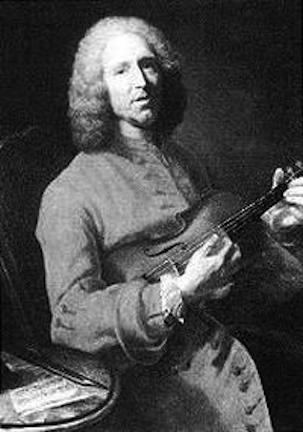




















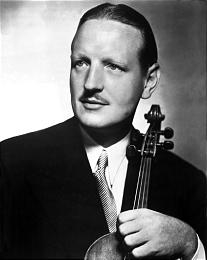
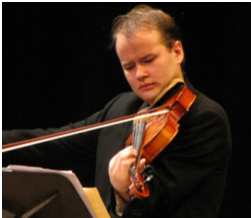

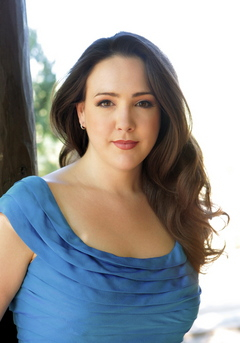

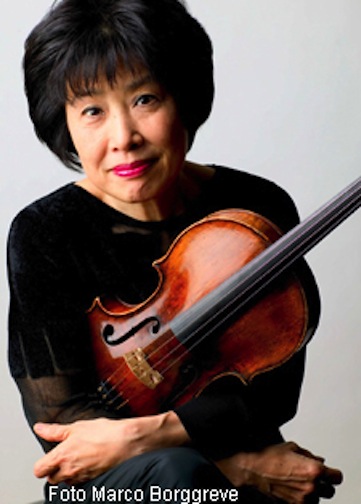




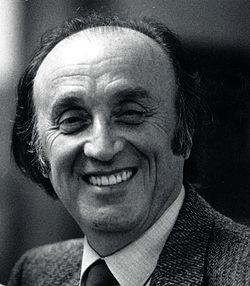



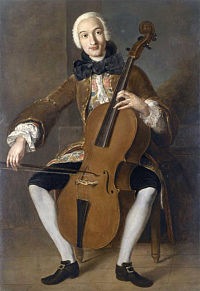
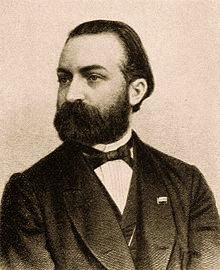
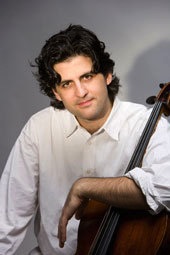
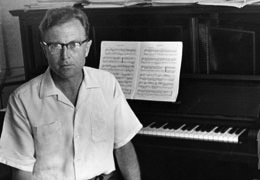


Classical music: Famed radio station WQXR names the best 100 recordings of 2019. Listen to samples of them here
2 Comments
PLEASE HELP THE EAR. IF YOU LIKE A CERTAIN BLOG POST, SPREAD THE WORD. FORWARD A LINK TO IT OR, SHARE IT or TAG IT (not just “Like” it) ON FACEBOOK. Performers can use the extra exposure to draw potential audience members to an event. And you might even attract new readers and subscribers to the blog.
By Jacob Stockinger
Did you get a gift card for the holidays?
Are you looking how to spend it by either purchasing CDs or subscribing to a streaming service?
Help and guidance are available.
Few names in the airing of classical music carry more prestige than the famed radio station WQXR in New York City.
To check out the radio station’s choice of the best recordings of 2019 is also to see where the worlds of recording and concertizing are heading.
Such trends include rediscovering neglected composers and championing new music as well as women composers, such as Clara Schumann, and composers of color, such as the American composer Florence Price (below), who has often been featured on Wisconsin Public Radio this past year.
But you will also find noteworthy recordings of such classics as Johann Sebastian Bach – and two of his rarely heard cousins instead of his sons – and well as outstanding recordings of symphonies and piano sonatas (below, the set by Igor Levit) for the upcoming Beethoven Year to mark the 250th anniversary of the birth of the composer.
And you will also find names of outstanding performers you may not have heard of — such as the exceptional Chinese pianist Haochen Zhang (below), a Van Cliburn Competition gold medalist whom The Ear would like to see perform here.
Here is a link to 25 picks with commentaries– plus another 75 titles and samples, without commentary, to round out a Top 100.
Happy listening!
https://www.wqxr.org/story/best-classical-recordings-2019/
Share this:
Tags: #AmericanComposer, #AmyBeach, #AndrewNorman, #Anne-SophieMutter, #AntoninDvorak, #AntonioVivaldi, #BarbaraStrozzi, #BaroqueMusic, #BeethovenPianoSonatas, #BeethovenYear, #BelaBartok, #BlogPost, #BlogPosting, #CamilleSaint-Saens, #CarolineShaw, #ChamberMusic, #ChoralMusic, #ClaraSchumann, #ClassicalGuitar, #CompactDisc, #ComposersofColor, #DaniilTrifonov, #DanishStringQuartet, #DerekBermel, #DomenicoScarlatti, #EdvardGrieg, #FacebookPost, #FacebookPosting, #FannyMendelssohn, #FilmMusic, #FlorencePrice, #FranzJosephHaydn, #FredericChopin, #GabrielFaure, #GeorgeFridricHandel, #GiacomoPuccini, #GiftCard, #GiftGuide, #GuitarMusic, #GustavMahler, #HaochenZhnag, #HectorBerlioz, #HolidayGift, #HolidayGiftGuide, #IgorLevit, #IsaacAlbeniz, #IsataKanneh-Mason, #JeanSibelius, #JenniferHigdon, #JohannesBrahms, #JohannSebastianBach, #JohnTavener, #JohnWilliams, #JuliaWolfe, #LudwigVanBeethoven, #LuigiBoccherini, #MauriceRavel, #MieczyslawWeinberg, #ModestMussorgsky, #MovieMusic, #NeglectedComposers, #NeglectedMusic, #NewMusic, #NewYorkCity, #OperaMusic, #OrchestralMusic, #OrganMusic, #PeterIlyichTchaikovsky, #PianoConcerto, #PianoSonata, #RichardStrauss, #RobertSchumann, #SergeiProkofiev, #SergeiRachmaninoff, #SergeiRachmaninov, #StringQuartet, #TheEar, #VanCliburn, #VanCliburnInternationalPianoCompetition, #ViolinConcerto, #ViolinMusic, #VocalMusic, #WisconsinPublicRadio, #WolfgangAmadeusMozart, #WomenComposer, #WQXRradio, #WyntonMarsalis, 2019, Albeniz, American, American composer, Amy Beach, Andrew Norman, Anne-Sophie Mutter, anniversary, Antonín Dvořák, Antonio Vivaldi, Arts, Bach, Barbara Strozzi, Baroque, Baroque music, Bartok, Béla Bartók, Beethoven, Beethoven piano sonatas, Beethoven Year, Berlioz, best, birth, blog, Boccherini, Brahms, Caroline Shaw, CD, Chamber music, champion, China, Chinese, Chopin, choral music, Clara Schumann, Classical music, classicalmusic, classics, color, commentary, Compact Disc, composer, composers of color, concertizing, concerto, conductor, cousin, Daniil Trifonov, Danish String Quartet, Derek Bermel, discover, Domenico Scarlatti, Dvorak, Early music, Edvard Grieg, Facebook, fame, Fanny Mendelssohn, Faure, film, film music, Florence Price, forward, Franz Joseph Haydn, Franz Schubert, Frédéric Chopin, George Frideric Handel, Giacomo Puccini, gift, gift card, gift guide, gold, Gold medal, Grieg, guidance, guitar, Gustav Mahler, Handel, Haochen Zhang, Haydn, Hector Berlioz, help, Holiday, holiday gift guide, Igor Levit, Isata Kanneh-Mason, Jacob Stockinger, Jean Sibelius, Jennifer Higdon, Johann Sebastian Bach, Johannes Brahms, John Tavener, John Williams, Julia Wolfe, like, link, Ludwig van Beethoven, Luigi Boccherini, Mahler, Maurice Ravel, medal, Mieczyslaw Weinberg, Modest Mussorgsky, Mompou, Mozart, Music, Mussorgsky, name, neglected, neglected composer, neglected music, new, New Music, New York City, noteworthy, opera, Orchestra, organ, perform, Peter Ilyich Tchaikovsky, Pianist, Piano, Piano concerto, Piano sonata, post, posting, prestige, prize, Puccini, Rachmaninoff, Rachmaninov, Radio, radio station, Ravel, reader, recording, Richard Strauss, Robert Schumann, Saint-Saens, Scarlatti, Sergei Prokofiev, Sergei Rachmaninoff, service, share, Shaw, Sibelius, son, Sonata, Strauss, streaming, String quartet, subscribe, subscription, symphonies, symphony, tag, Taiwan, Taiwanese, Tchaikovsky, The Ear, title, trend, United States, Van Cliburn, Van Cliburn International Piano Competition, Viola, Violin, Vivaldi, vocal music, winner, wisconsin public radio, Wolfgang Amadeus Mozart, women, word, world, WQXR, WQXR-FM, Wynton Marsalis, year, Zhang